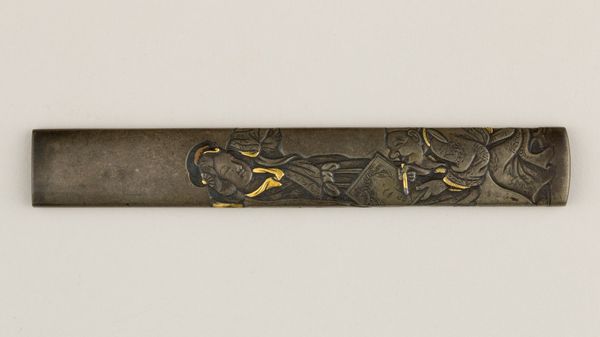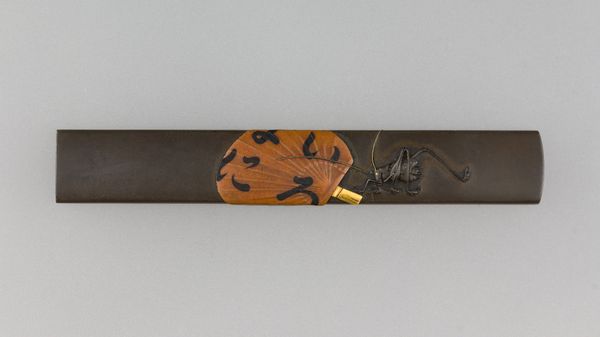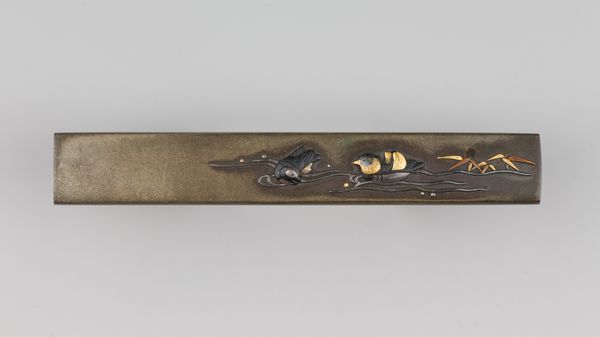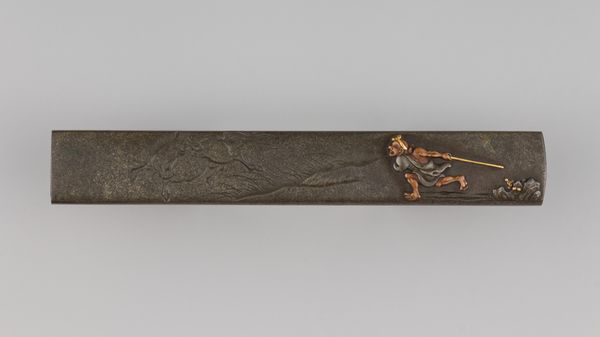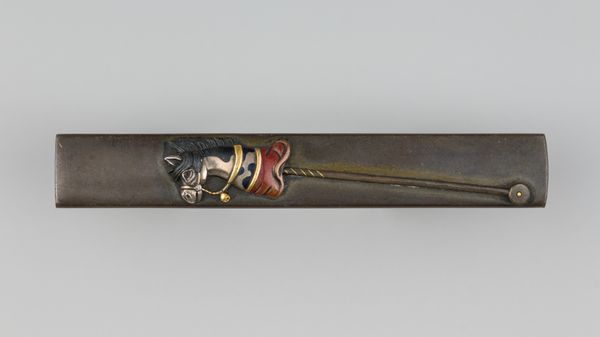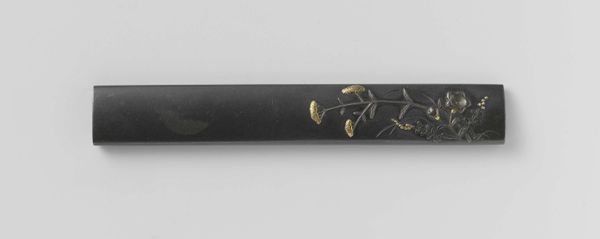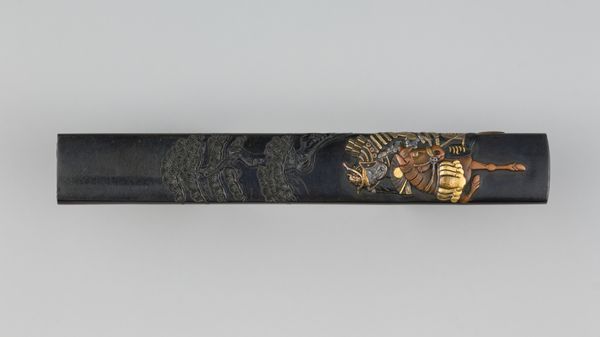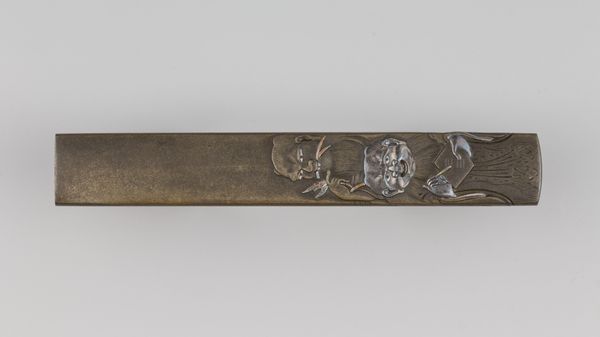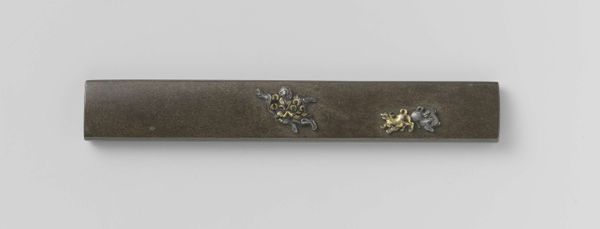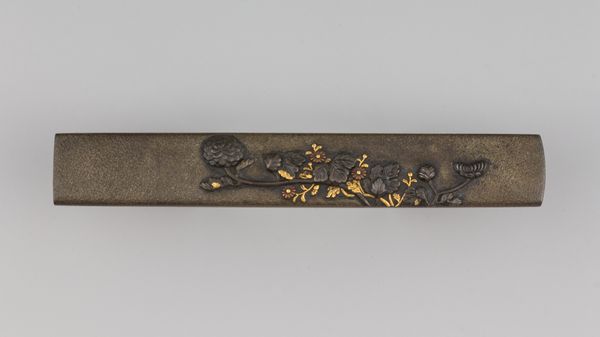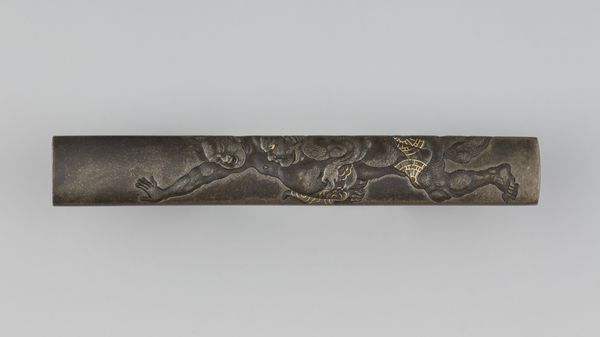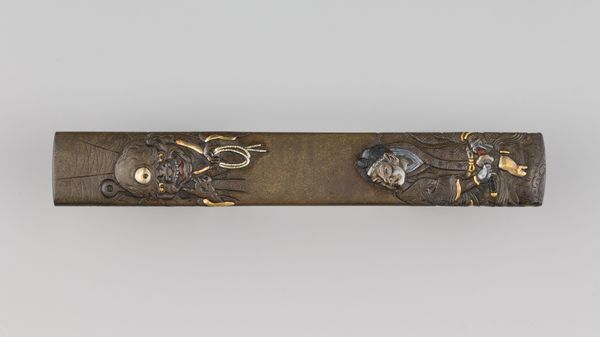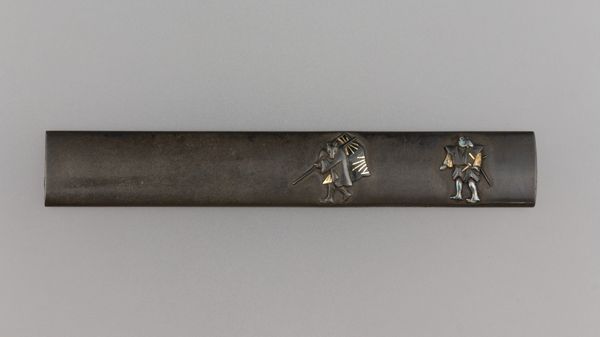
carving, metal, relief, bronze, sculpture
#
carving
#
metal
#
asian-art
#
relief
#
bronze
#
japan
#
sculpture
#
men
#
armor
#
sword
Dimensions: L. 3 13/16 in. (9.7 cm); W. 9/16 in. (1.4 cm); thickness 3/16 in. (0.5 cm); Wt. 1.2 oz. (34 g)
Copyright: Public Domain
Curator: This beautiful object is a *kozuka*, or knife handle, made in Japan sometime between 1775 and 1870. It's currently held in the collection of the Metropolitan Museum of Art. Editor: What immediately strikes me is how tactile it looks, even from a photograph! The bronze has this worn texture, and the carving, though small, seems deeply dimensional. I'm really drawn to the sense of weight and the contrast in the metallic surface. Curator: Absolutely. The *kozuka*, while serving a functional purpose in adorning a sword, also served as a platform for incredible artistry. Consider the material: bronze. Bronze production in Japan during this period was tied to its military ambitions, as bronze cannons required extensive smelting and metallurgy operations, suggesting that artisans crafting even small items like these were tapping into and demonstrating widespread military and technological resources. Editor: Fascinating! Knowing this history influences how I look at this. Here, we have this image of what appears to be a serene, perhaps even humorous figure – possibly a craftsman himself – sleeping with a fan on a sword handle… So, given that Japan’s warrior class, the samurai, largely defined the reception of decorative arts and armor making, does this speak to an ironic sensibility about labor, class, or even a subversion of samurai culture? Curator: It's certainly a potential interpretation! The art of the *kozuka* reflects a negotiation between the tastes and expectations of samurai patrons, with the undeniable artistry and expression of its makers. These were luxury objects, tied to social status, power, and the political economies of sword production. Each component represents extensive labor processes from mining, smelting, mold creation and relief carving before even making its way to a wealthy commissioner. It reminds us to carefully investigate how social hierarchies shape craft practices. Editor: A good reminder. And seeing how that plays out in metalwork, juxtaposed against peaceful imagery, makes me rethink how to assess the artist’s process, what meanings are built-in and those which might escape, or perhaps evade entirely. Thanks for opening that up. Curator: My pleasure! Every object holds multitudes of narratives, doesn't it? And that’s what makes examining their creation so crucial for unearthing new historical and cultural insights.
Comments
No comments
Be the first to comment and join the conversation on the ultimate creative platform.
